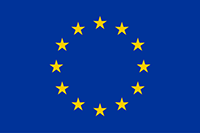I am looking for information as
Researcher

Industry

Patient

PROSTATE CANCER SCREENING IN MEN AGED 50–69 YEARS (STHLM3): A PROSPECTIVE POPULATION-BASED DIAGNOSTIC STUDY
Summary
Background
The prostate-specific antigen (PSA) test is used to screen for prostate cancer but has a high false-positive rate that translates into unnecessary prostate biopsies and overdiagnosis of low-risk prostate cancers. We aimed to develop and validate a model to identify high-risk prostate cancer (with a Gleason score of at least 7) with better test characteristics than that provided by PSA screening alone.
Methods
The Stockholm 3 (STHLM3) study is a prospective, population-based, paired, screen-positive, diagnostic study of men without prostate cancer aged 50–69 years randomly invited by date of birth from the Swedish Population Register kept by the Swedish Tax Agency. Men with prostate cancer at enrolment were excluded from the study. The predefined STHLM3 model (a combination of plasma protein biomarkers [PSA, free PSA, intact PSA, hK2, MSMB, MIC1], genetic polymorphisms [232 SNPs], and clinical variables [age, family, history, previous prostate biopsy, prostate exam]), and PSA concentration were both tested in all participants enrolled. The primary aim was to increase the specificity compared with PSA without decreasing the sensitivity to diagnose high-risk prostate cancer. The primary outcomes were number of detected high-risk cancers (sensitivity) and the number of performed prostate biopsies (specificity). The STHLM3 training cohort was used to train the STHLM3 model, which was prospectively tested in the STHLM3 validation cohort. Logistic regression was used to test for associations between biomarkers and clinical variables and prostate cancer with a Gleason score of at least 7. This study is registered with ISCRTN.com, number ISRCTN84445406.
Findings
The STHLM3 model performed significantly better than PSA alone for detection of cancers with a Gleason score of at least 7 (p<0·0001), the area under the curve was 0·56 (95% CI 0·55–0·60) with PSA alone and 0·74 (95% CI 0·72–0·75) with the STHLM3 model. All variables used in the STHLM3 model were significantly associated with prostate cancers with a Gleason score of at least 7 (p<0·05) in a multiple logistic regression model. At the same level of sensitivity as the PSA test using a cutoff of ≥3 ng/mL to diagnose high risk prostate cancer, use of the STHLM3 model could reduce the number of biopsies by 32% (95% CI 24–39) and could avoid 44% (35–54) of benign biopsies.
Interpretation
The STHLM3 model could reduce unnecessary biopsies without compromising the ability to diagnose prostate cancer with a Gleason score of at least 7, and could be a step towards personalised risk-based prostate cancer diagnostic programmes.
Funding
Stockholm County Council (Stockholms Läns Landsting).
Find the whole article here!




